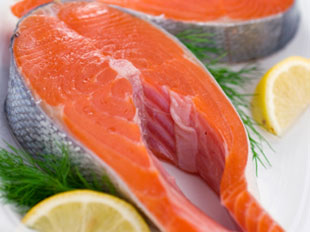My Oh My Omega
Recent science suggests health benefits come not from a low–fat diet, but a right–fat diet. Omega–3 fatty acids have been found to lower cancer risk, reduce depression, and boost brain development. But which source packs the most punch?

Go fish: Seafood is nature’s top omega–3 dispenser — giving you both DHA (docosahexaenoic acid) and EPA (eicosapentaenoic acid), 2 essential lipids that must be obtained through what you eat. But concerns over mercury contamination scare many would–be fish–eaters into the poultry aisle. While the American Heart Association suggests consuming a catch twice a week, the Environmental Protection Agency recommends restricting fish to 12 ounces/week and avoiding big predators like shark or swordfish. Your best option is wild salmon, which is generally low in pollutants but rich in the healthy oil. Plus, research shows its high selenium content may protect against mercury’s harmful effects.
Go nuts: Flax and walnuts deliver omega–3 in the form of ALA (alpha–linolenic acid), which the body converts into DHA and EPA. Avoid trans and saturated fats, which can disrupt the conversion. Vitamins B6, B3, and C, zinc, and magnesium all play a crucial role in the enzyme process, so get sufficient amounts.
Supplement: Cod liver oil and fish oil are available without prescription. Supplements can be beneficial if you’re not getting enough omega–3s from diet alone. But they may produce negative side effects, so check with your doctor before taking them.

